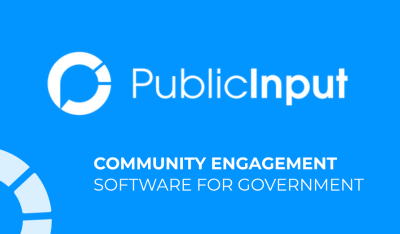
Access and communication are two of the most important factors in successful, equitable, and representative community engagement. After all, how can your community learn about initiatives if they’re not in the communication loop?
Here are four ways to close the communication loop and build a stronger relationship with your community.
1. Consistent, Accurate, & Informative Engagement
Some residents prefer emails; some attend in-person meetings. Some prefer to leave comments on social media, and some watch the local news every single day.
Given the wide range of ways people prefer to communicate, the best strategy to maximize engagement is to use a blend of online and offline methods to reach the widest range of people.

Consistent Communication
Keeping your community well-informed is always at the forefront of engagement. Integrated CRM can help you keep track of participant information, from their interests to contact information for future engagement initiatives.
Offer consistent updates on projects or surveys, such as regular newsletters on ongoing initiatives, text updates, social media posts, or even advertisements in the local news. Give participants the ability to opt-in to future updates or subscribe on your engagement page.
The more options you offer, the more people you can reach.

An integrated email management system, or campaign builder, can help you automate communications for project updates or newsletters.
Informative, Honest, and to the Point
Open, honest, and informative content is a great step towards building trust within the community. All communication should outline the purpose for the project, how it might affect the community, and encourage participation.
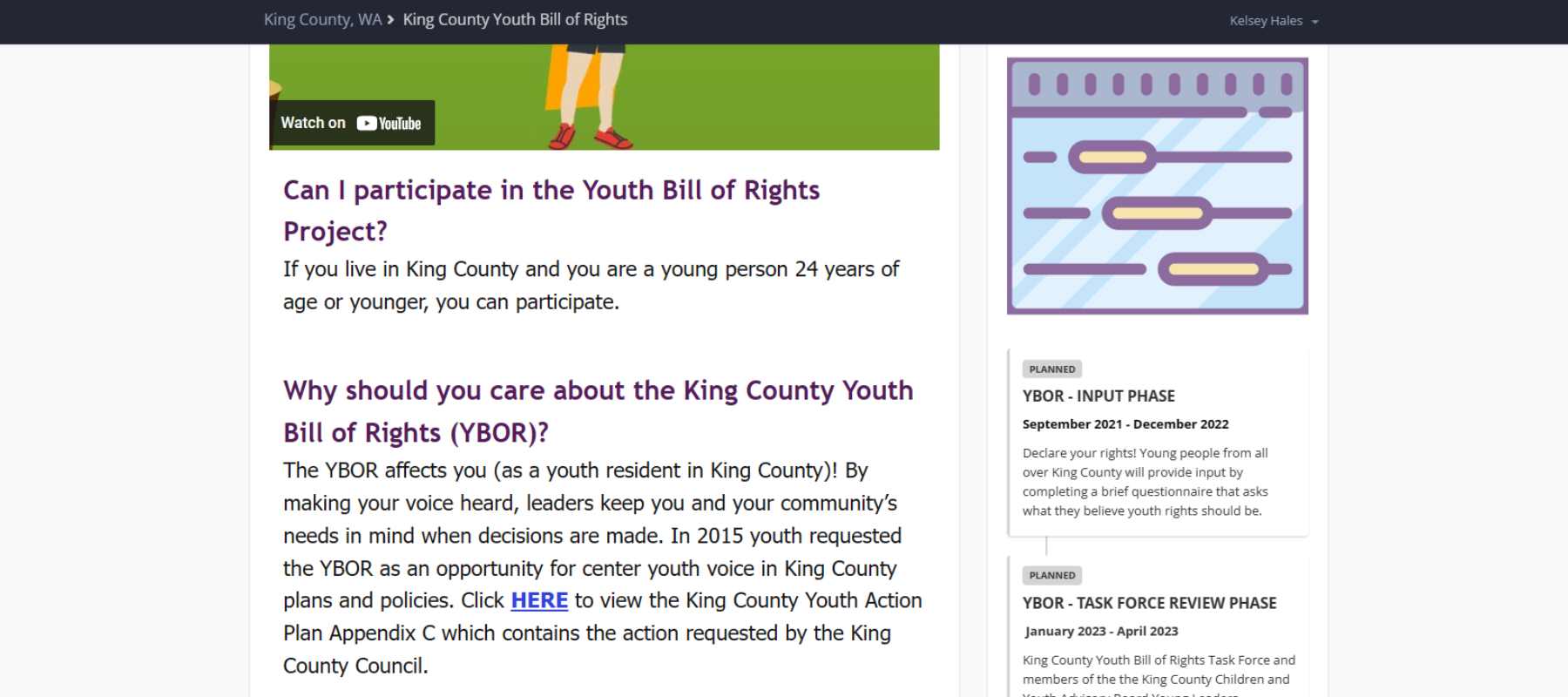
Tailor content to be well-organized, inviting, and easy to read.
Know Your Audience
Research has shown that participants are more likely to feel invested if they have a personal connection to the project. That can come in the form of their personal interests, whether the project affects their location, community, or wellbeing, or demographic distinctions. For example, offering multi-lingual or translated content for a community with a large ESL audience.
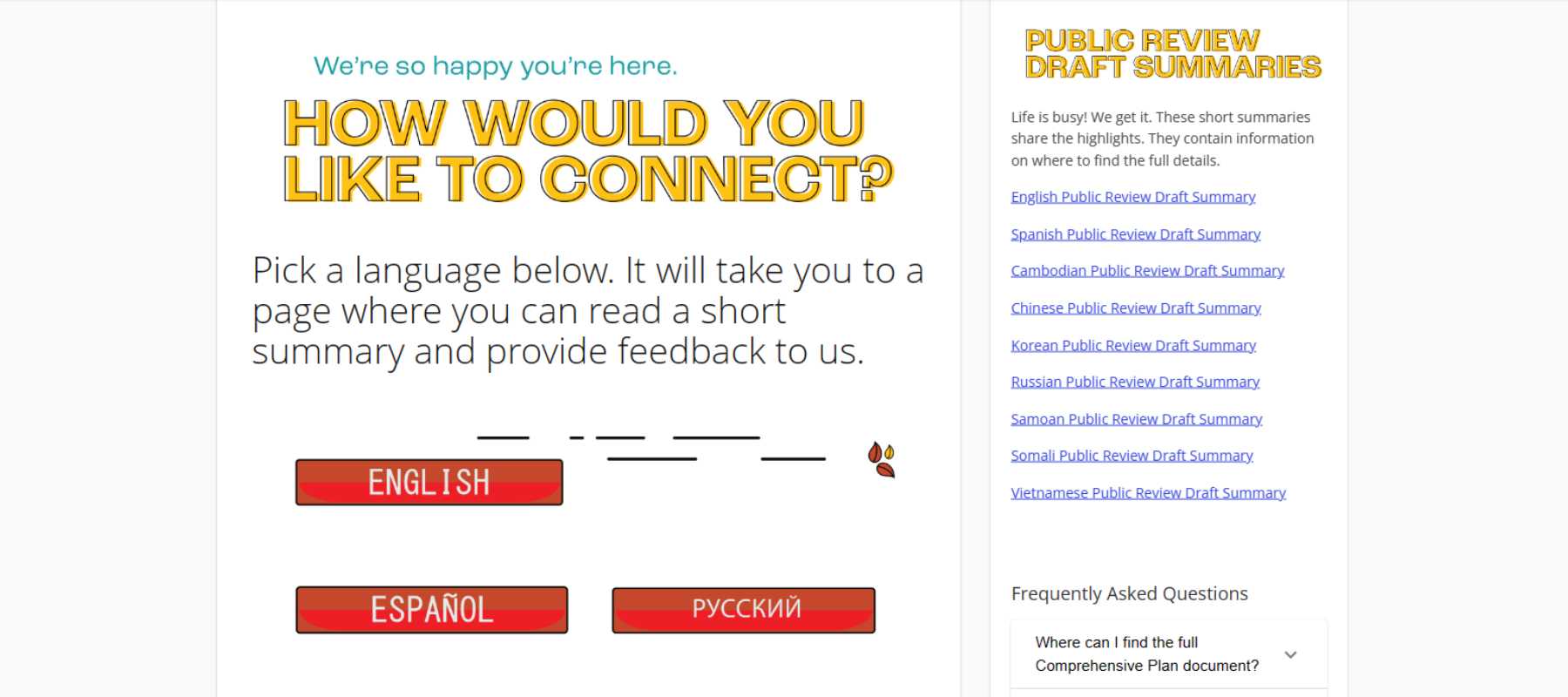
Create content that caters to your community to make engagement accessible for all.
2. Offer Online Communication Methods
As a digital society, a large number of people receive their information via online methods. Email, social media, and websites are all important channels of communication.
Public Portals
Make it easy for community members to find and learn about projects with one central engagement hub. A well-organized, searchable public portal is key; residents can search for initiatives using keywords, review past projects, learn about new ones, and more.
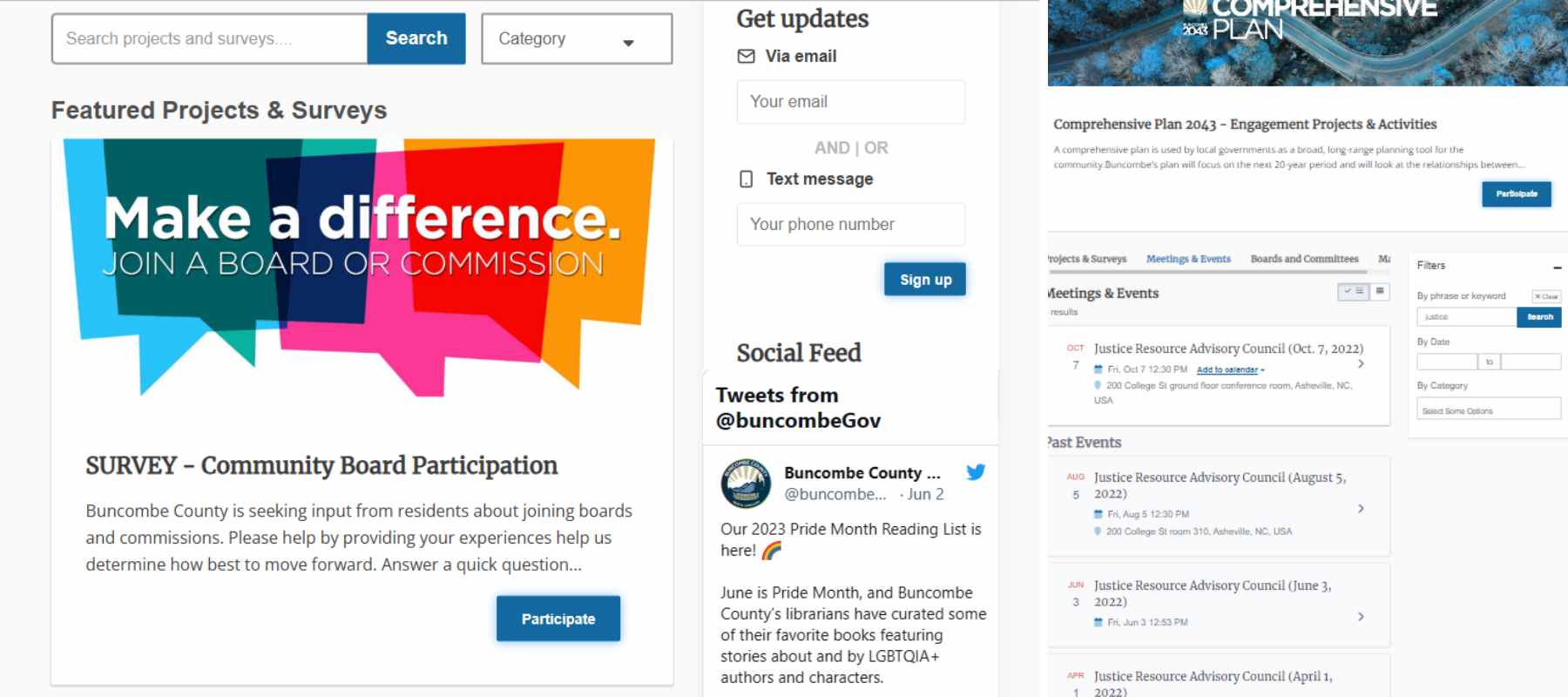
An easy-to-navigate public portal simplifies the engagement process.
Newsletters, reminders, and updates are a great way to keep residents informed of upcoming projects, meetings, or surveys. An integrated email management system, or campaign builder, can help you keep track of participant interactions.
Use contact information provided by participants via survey to create email lists based on interests, past participation, and more. You can also let community members sign up for updates via an embedded sign-up form.
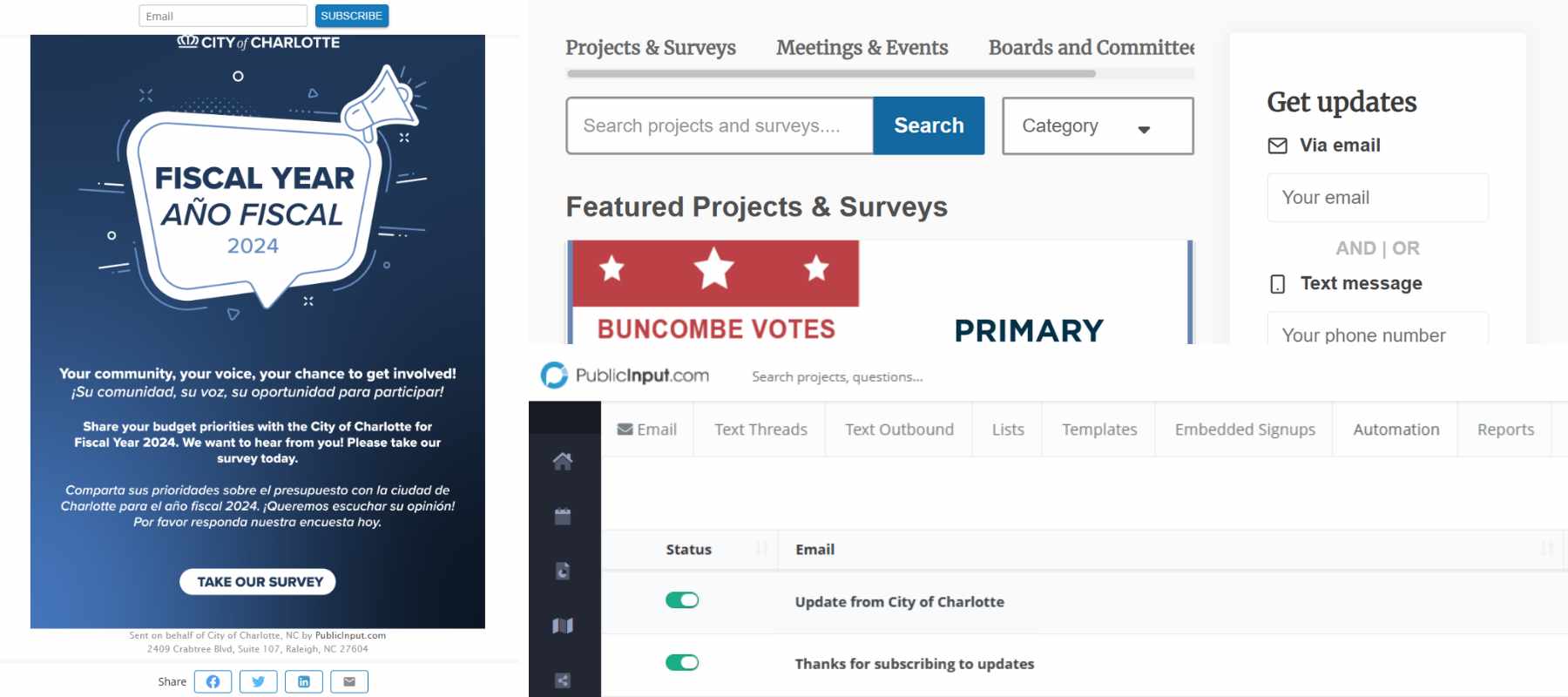
Email campaigns, newsletters, and project updates help keep engagement at the forefront of your community. Sustain interest over time with ongoing communication vs. one-and-done interactions.
Social Media
It’s estimated that over 70% of Americans use social media, from online news sites to applications like Facebook and Instagram. Social media has the power to reach a large audience, and sites like Facebook and NextDoor offer an online platform for community groups to band together to discuss shared interests. Soliciting discussion, opinions, and sharing information on official social media accounts is a great way to keep your community updated regarding ongoing projects.
If you have the funds available, it’s worth looking into taking social media engagement a step further with a paid campaign. Paid advertising via social media is often coded by interest or geo-location, so creating a social media campaign for an upcoming engagement project is an effective way to spread the word.
It’s important to utilize these communication channels, but it’s even more important to track and attribute social media comments and interactions for reporting purposes. Tracking and attribution can be performed manually or via a third party. Using an engagement platform that syncs with your social media accounts is an even more effective way to track and report on social media participation over time.

Embed social media links on your public portal to remind residents to follow your city, county, or agency account.
3. Incorporate Offline Communication
There are multiple reasons why a member of the community might prefer offline communication over online communication, whether it is age, lack of resources, or just personal preference. Combining offline and online communication methods is the best way to ensure everyone has the opportunity to participate.
Flyers & Signage
Flyers might seem outdated, but they continue to be a good method of communication, especially in public spaces. Printed flyers can be handed out at public events, posted on bulletin boards in shared community spaces, or even mailed to participants to encourage them to participate in upcoming engagement initiatives.
Flyers or signs can also drive more digital engagement with the use of QR codes, which recipients or passerby can scan in order to be directed to your public engagement hub. You can also include other means of communication, such as “text ###### to participate,” or “call ###-###-#### to leave a message.”
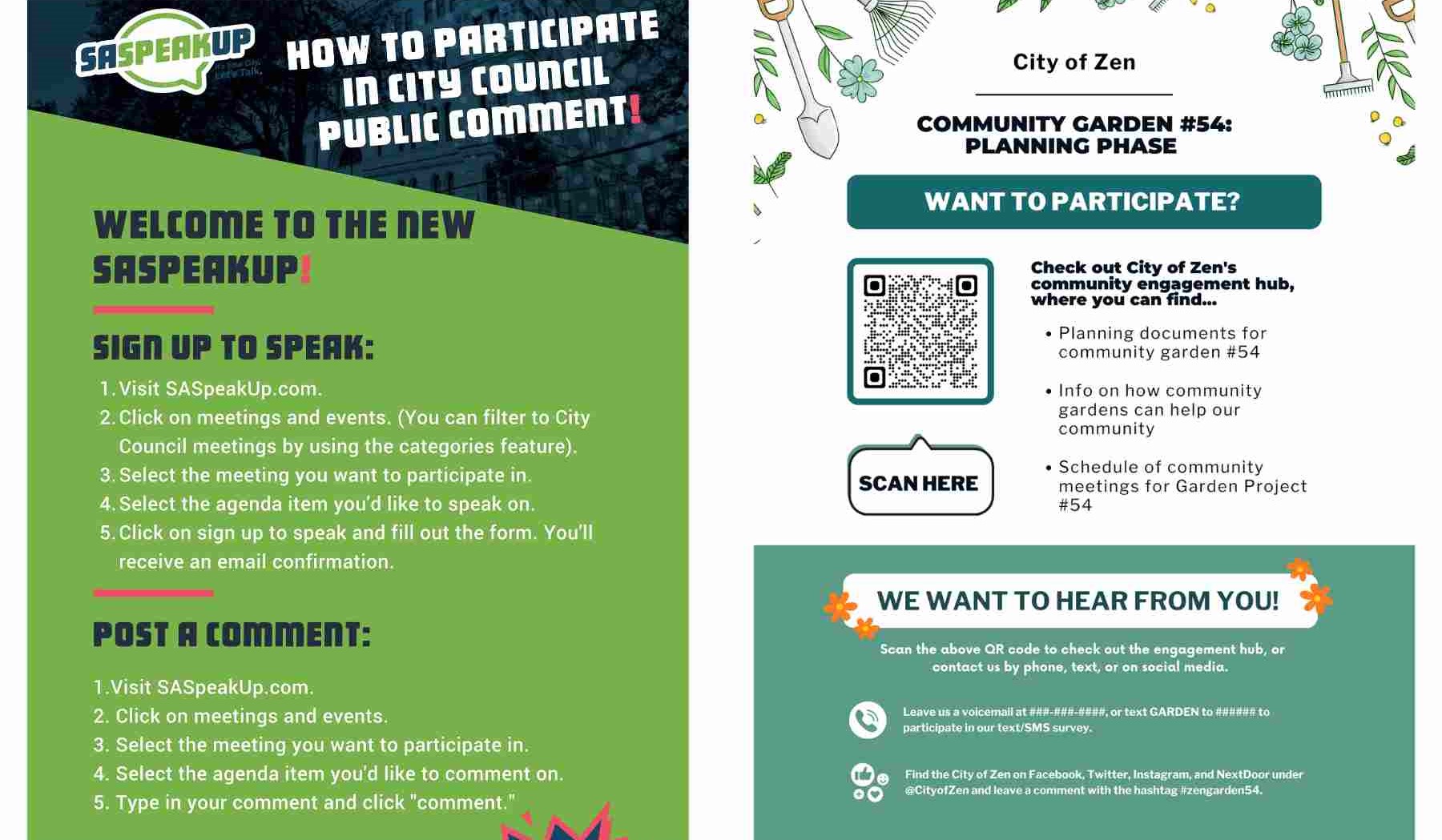
Flyers or signs can kickstart a community’s interest in a project. Working with local community organizations to display or distribute flyers and signage can help spread the word within a community.
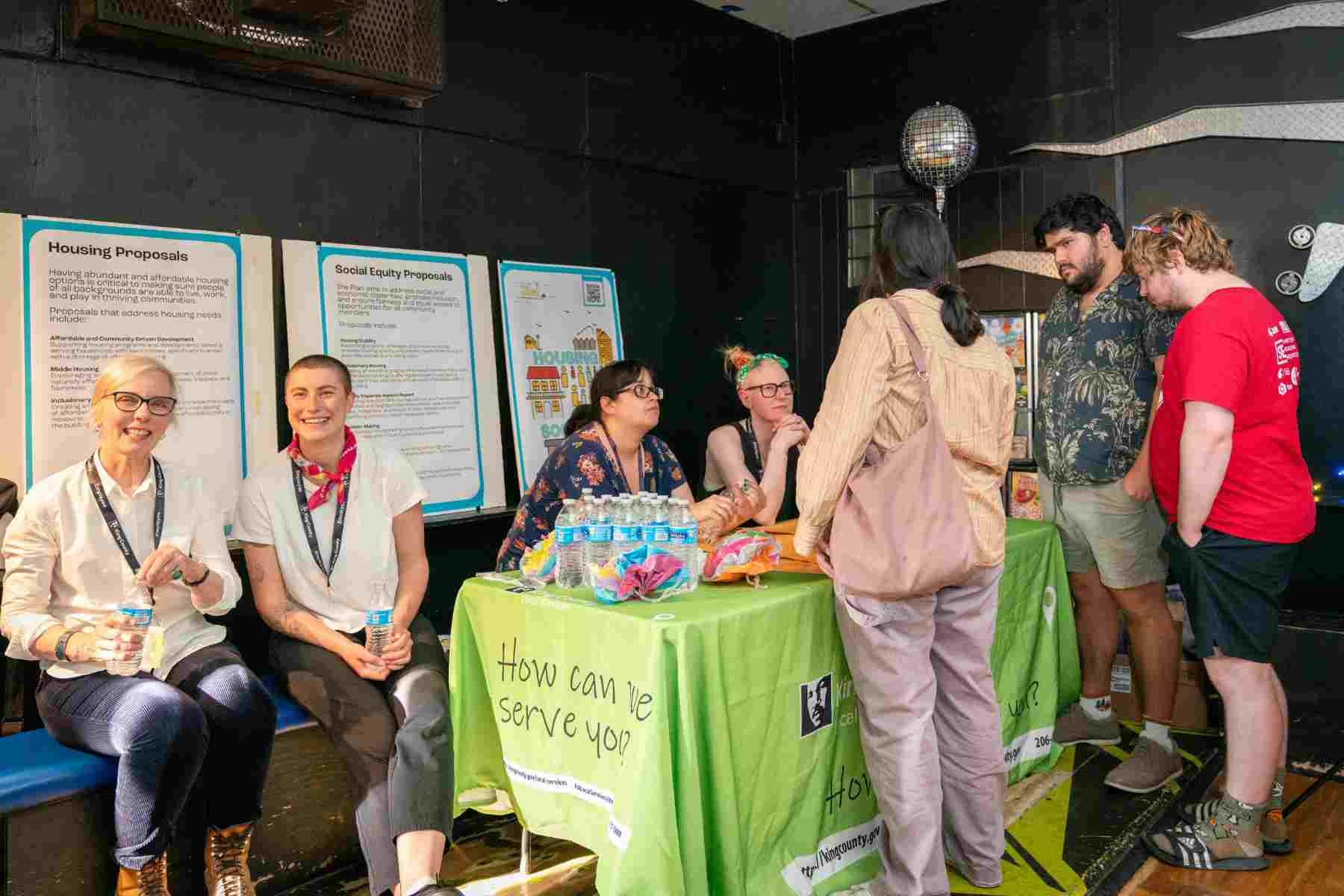
King County, Washington residents attend an event hosted for their 2024 Comprehensive Plan Update. Photo by Trevor Dykstra.
News (Local, Radio, Print)
Local, radio, or print news often overlaps with online news coverage, and thus isn’t 100% offline. However, it is important to use whatever means you have available to interact with your community. There is still a large digital divide in news preferences; older adults are far more likely to use television, radio, or print media as a source of news.
Many organizations use local cable channels to livestream a variety of content, including community meetings, interviews, and even live recordings of local podcasts.

Local news websites, publications, radio, or tv coverage offer direct connections with a pre-existing audience. This communication channel is already established and can add legitimacy or even a sense of urgency to your engagement project
Text & Phone
It’s estimated that 42 million Americans don’t have the ability to purchase broadband internet because they live in what’s called a digital desert: “dead zones” where there is a lack of infrastructure to support adequate internet access. 20% of Americans rely on mobile phone data for their internet access. Options like voicemail hotlines to collect comments, SMS text surveys, and the ability to participate in online meetings via phone call are all valuable tools to help ensure every resident can participate regardless of their resources.
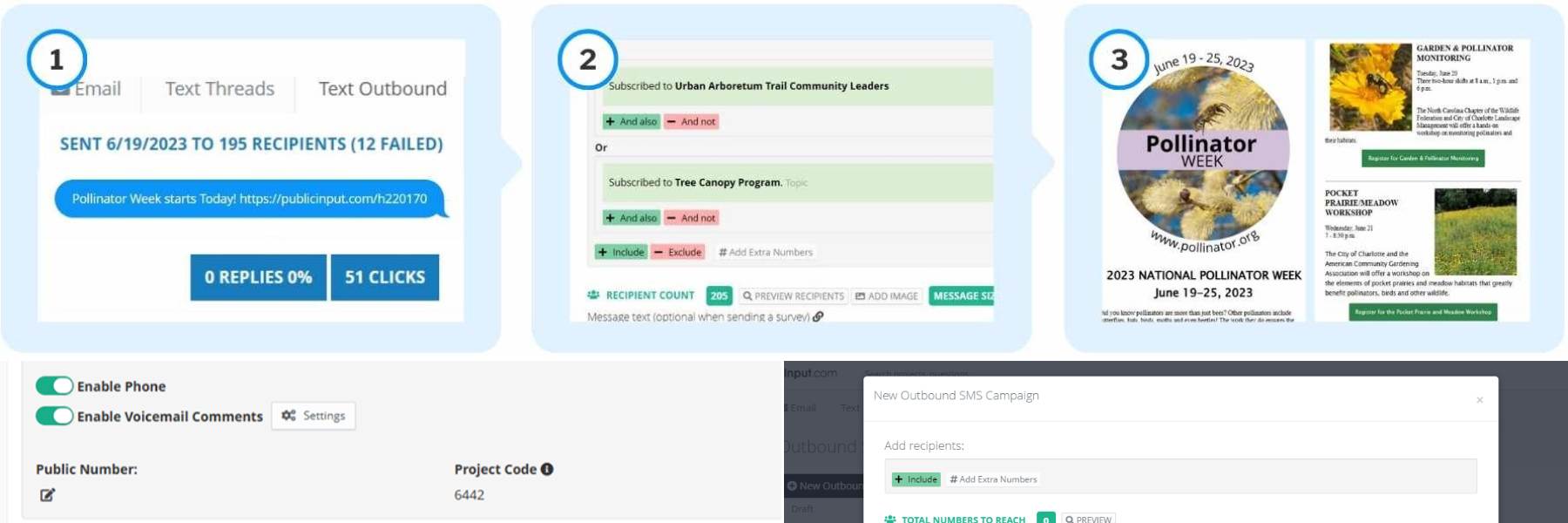
Pair phone and text capabilities with targeted outreach, such as segments based on past participation. Enable phone and text comments and offer dial-in participation in meetings for maximum accessibility.
4. Geo-Location, Mapping, and Attribution
That’s a lot of communication to keep track of. How can you keep track of said communication while also learning what works best for your community?
QR Codes
Versions of the same survey can be recreated in different languages or linked to other distinguishing factors, such as the method of communication. If you’re using posters or flyers at an event, you can create a duplicate version of your project page and use a QR code to link to that specific version.
Multiple versions of surveys can help you track and generate reports on each version, as well as an overall report that can distinguish who participated and where their participation originated from.
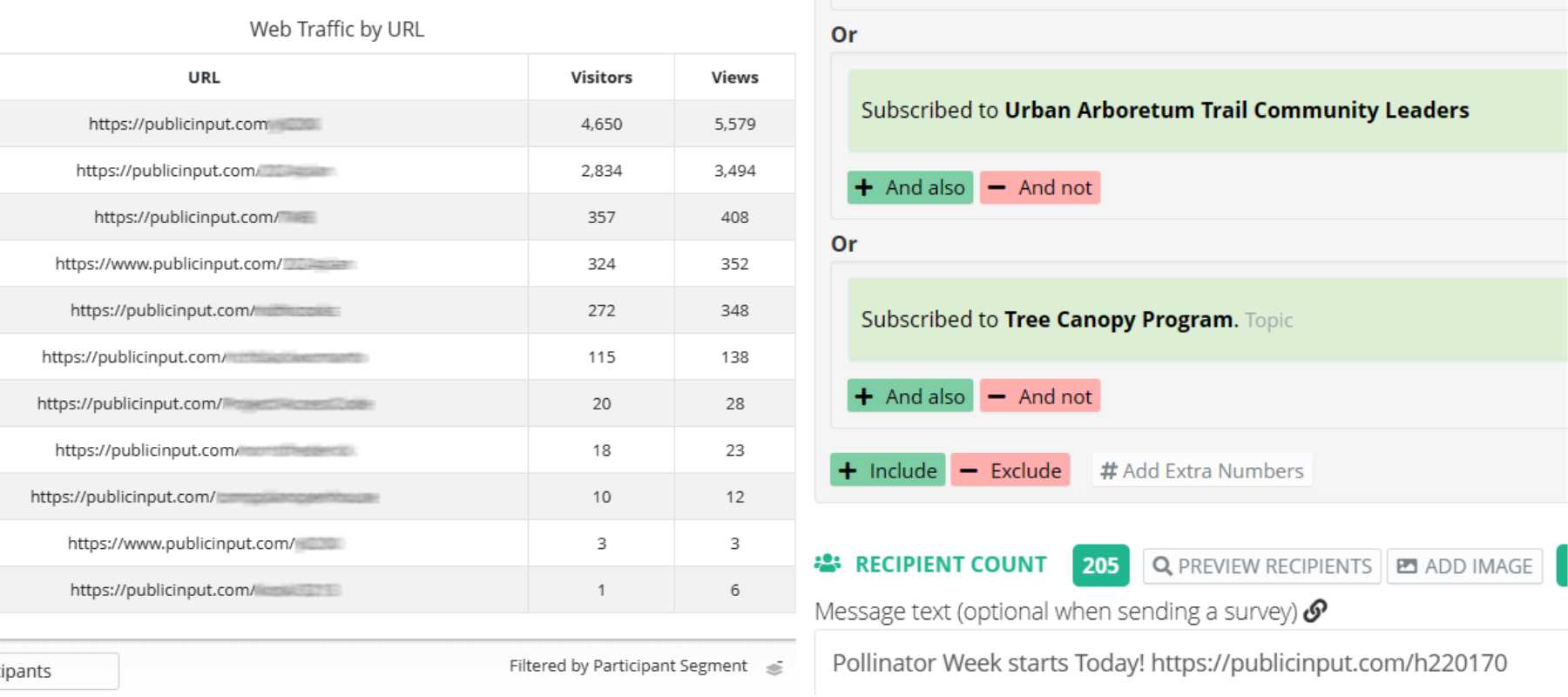
A PublicInput report comparing the performance of different versions of the same survey. Tracking and attribution are key elements in understanding how your community prefers to participate. Use data like this and pair it with past participation data to create targeted outreach and communication for future projects.
Equity Mapping
To truly understand and make well-informed decisions for your community, you need an all-in approach: a balance of both equity and representation. For example, when the opportunity to engage is equitable, you are more likely to receive representative feedback, because you are prioritizing engagement opportunities for everyone– not just assuming everyone has the same opportunities. The more decisions you make based on representative feedback, the more likely you are to build trust with your community.
That’s where Equity Mapping comes in. Equity Mapping uses ArcGIS to incorporate powerful screening tools created by the EPA, Justice40 Initiative, and the Census Bureau to help you translate engagement data into community action. Once you identify the communities you want to prioritize for an engagement project, you can start to build a strategy designed to meet their needs for participation.
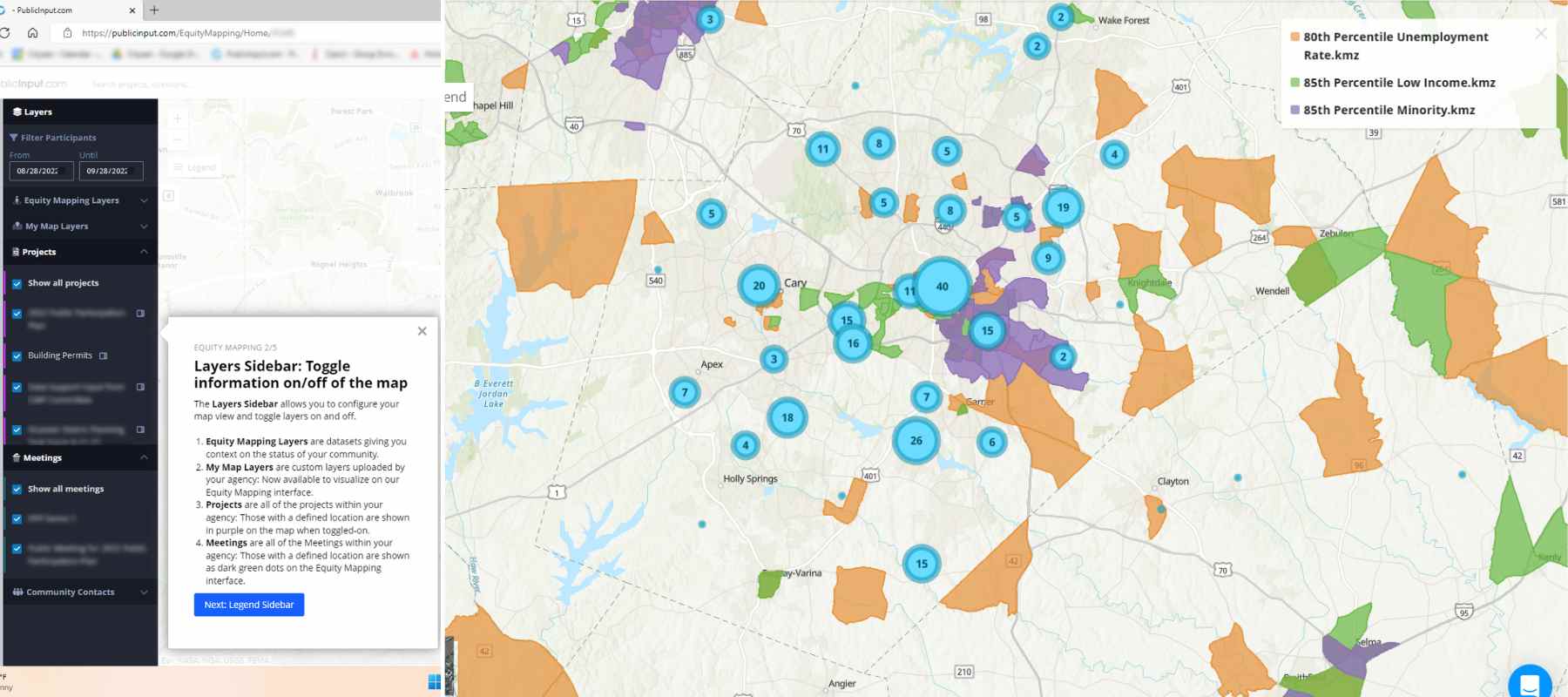
Take engagement analysis to the next level with a tool that allows you to map your project participation and compare it with community maps and data.
Ready to Close the Communication Loop?
PublicInput is a comprehensive online engagement platform with a fully integrated CRM and communication suite to help you close the communication loop. Book a demo and learn more about how our engagement software helps you expand your reach within your community.

